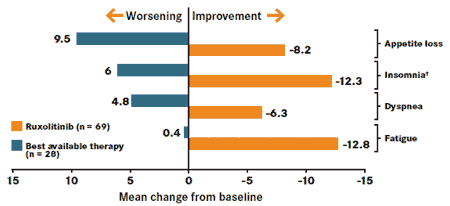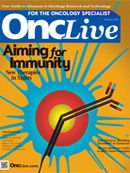Ruxolitinib Results Promising in 2 Myelofibrosis Studies
Ruxolitinib, an investigational JAK inhibitor, demonstrated significant benefits for patients with myelofibrosis.
Ruxolitinib, an investigational JAK inhibitor, demonstrated significant benefits for patients with myelofibrosis in 2 studies presented during the American Society of Clinical Oncology annual meeting in Chicago, Illinois, June 3-7.
Before the congress ended, Incyte Corporation submitted data from the Controlled Myelofibrosis Study with Oral JAK Inhibitor Treatment (COMFORT) trials to the FDA as part of a new drug application.
COMFORT-II compared ruxolitinib with the best available therapy for the bone marrow disorder, and showed that ruxolitinib significantly reduced spleen size and volume (P <.0001).
Ruxolitinib also reduced symptom burden and improved quality of life (QOL), said one of the study’s authors, Alessandro Maria Vannucchi, MD, of the University of Florence in Italy, who presented the results.
COMFORT-II was an open-label trial that enrolled 219 patients with intermediate-2 or high-risk primary myelofibrosis, postpolycythemia vera myelofibrosis, or postessential thrombocythemia myelofi brosis. Patients were randomized in a 2:1 ratio to ruxolitinib 15 or 20 mg twice daily or to best available therapy and were treated for 48 weeks.
FIGURE. Change in Select EORTC QLQ-C30 Scores for Patients With Myelofi brosis at Week 48 Compared With Baseline in COMFORT II*

Improvements were seen by week 8 and continued through week 48
*EORTC QLQ-30 = European Organisation for Research and Treatment of Cancer Quality of Life Version 3.0 questionnaire †Ruxolitinib, n = 68
Adapted from Harrison CN, Kiladjian J, Al-Ali H, et al. Results of a randomized study of the JAK inhibitor ruxolitinib (INC424) versus best available therapy (BAT) in primary myelofi brosis (PMF), post-polycythemia vera-myelofi brosis (PPV-MF) or post-essential thrombocythemiamyelofi brosis (PET-MF). J Clin Oncol. 2011;29(suppl; abstr LBA6501).
In the control arm, 67% of patients were treated with at least 1 medication; 47% of those treated received hydroxyurea and 16% were given glucocorticoids.
The percentage of patients who met the primary endpoint (ie, at least 35% shrinkage in spleen volume at week 48) was 28.5% for ruxolitinib versus 0% for best available therapy (P <.0001). Median time to response was 12 weeks.
A marked improvement in QOL accompanied the reduction in spleen volume (Figure).
At baseline, about 60% of patients had anemia, and grade 3/4 anemia was reported in 42% of the experimental arm versus 31% in the control group. No survival benefit has emerged but follow-up was short.
In COMFORT-I, 41.9% of the ruxolitinibtreated patients versus 0.7% of the placebo group achieved the primary endpoint (ie, at least 35% shrinkage in spleen volume at week 48, P <.0001) at median follow-up of 32 weeks. Symptom burden was also signifi cantly improved (P <.0001) with ruxolitinib versus placebo. More thrombocytopenia and anemia were observed in the ruxolitinib arm.
Abstracts LBA6501, 6500




